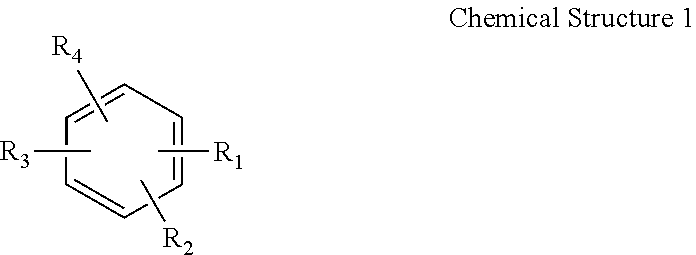Digestion of keratin
a technology of keratin and keratin powder, which is applied in the direction of organic chemistry, powdery paints, coatings, etc., can solve the problems of environmental and economic challenges, waste of resources, and waste of resources, and achieve the effect of desirable hydroxyl numbers and viscosities
- Summary
- Abstract
- Description
- Claims
- Application Information
AI Technical Summary
Benefits of technology
Problems solved by technology
Method used
Image
Examples
examples
[0185]The following examples further describe and demonstrate embodiments within the scope of the present invention. The Examples are given solely for purpose of illustration and are not to be construed as limitations of the present invention, as many variations thereof are possible without departing from the spirit and scope of the invention.
[0186]“Recycle content” as used herein (wt. %) is determined by combining the masses of recycled glycol, recycled aromatic polyacid source, recycled hydrophobe, and recycled digestible polymer, and dividing this sum by the total mass of reactants, and then multiplying the result by 100.
[0187]Hydroxyl numbers or values (OHVs) and acid numbers or values are determined by standard methods (ASTM E-222 and ASTM D3339, respectively) and reported as mg KOH / g. Viscosities are measured at 25° C. using a Brookfield DV-III Ultra rheometer with spindle #31 at 25%, 50%, and 75% torque, with 50% torque being the usual torque setting. Alternatively, depending...
example i
Digestion of Chicken Down Feathers
[0189]A 500 mL reactor equipped with an overhead mixer, condenser, heating mantle, thermocouple, and nitrogen inlet is charged with 202.75 g of diethanolamine, and 24.56 g of chicken feathers. The temperature was raised to 186° C. with stirring. Reflux was observed and the temperature was raised to 220° C. A Dean Stark trap was added to collect the refluxing liquid. After about 3 hours, the chicken feathers had completely digested, and the reaction was cooled to 100° C. This dark brown polyol (Polyol Example 5 in Table 1) yielded an acid value of 4.3 mg KOH / g, an OHV of 322.3, a viscosity of 3488 cP at 25° C. and no settling after several days.
example ii
[0190]A 1 L reactor equipped with an overhead mixer, condenser, heating mantle, thermocouple, and nitrogen inlet is charged with 351.1 g of diethylene glycol, followed by eleven additions of goose down at a reaction temperature of 180-185° C., each averaging 26.04 g over the course of the next 23 hours. Prior to each addition, the reaction mixture was inspected visually prior to adding another aliquot of goose down to insure that the previous addition had undergone full digestion and dissolution.
[0191]At this point, the polyol was cooled to 121° C. and 299.3 g of the product were removed from the reactor. This dark brown polyol (Polyol Example 2 in Table 1) yielded an acid value of 25.7 mg KOH / g, an OHV of 622.1, a viscosity of 3488 cP at 25° C. and no apparent settling after several days at room temperature.
PUM
| Property | Measurement | Unit |
|---|---|---|
| temperature | aaaaa | aaaaa |
| viscosity | aaaaa | aaaaa |
| viscosity | aaaaa | aaaaa |
Abstract
Description
Claims
Application Information
 Login to View More
Login to View More - R&D
- Intellectual Property
- Life Sciences
- Materials
- Tech Scout
- Unparalleled Data Quality
- Higher Quality Content
- 60% Fewer Hallucinations
Browse by: Latest US Patents, China's latest patents, Technical Efficacy Thesaurus, Application Domain, Technology Topic, Popular Technical Reports.
© 2025 PatSnap. All rights reserved.Legal|Privacy policy|Modern Slavery Act Transparency Statement|Sitemap|About US| Contact US: help@patsnap.com



